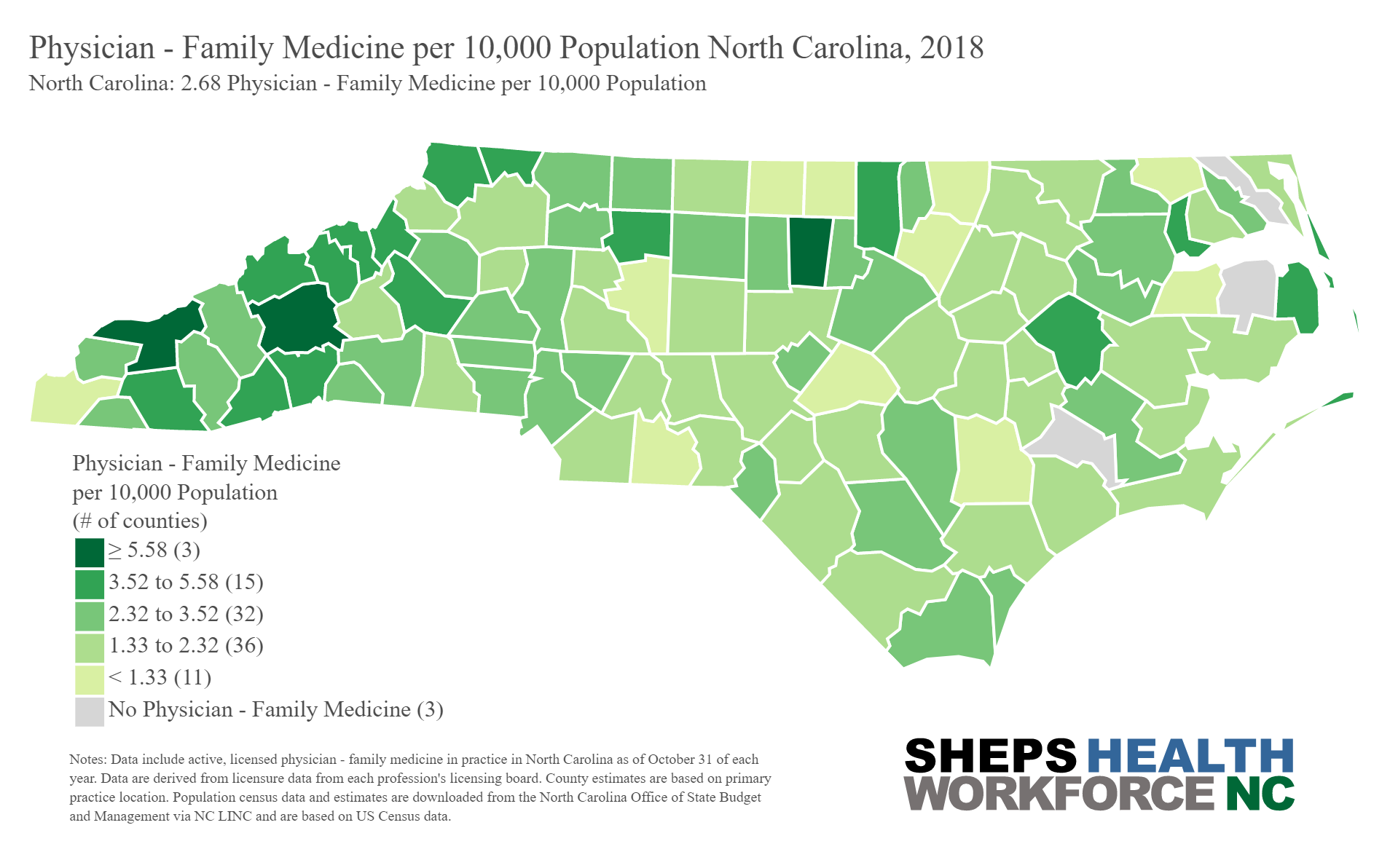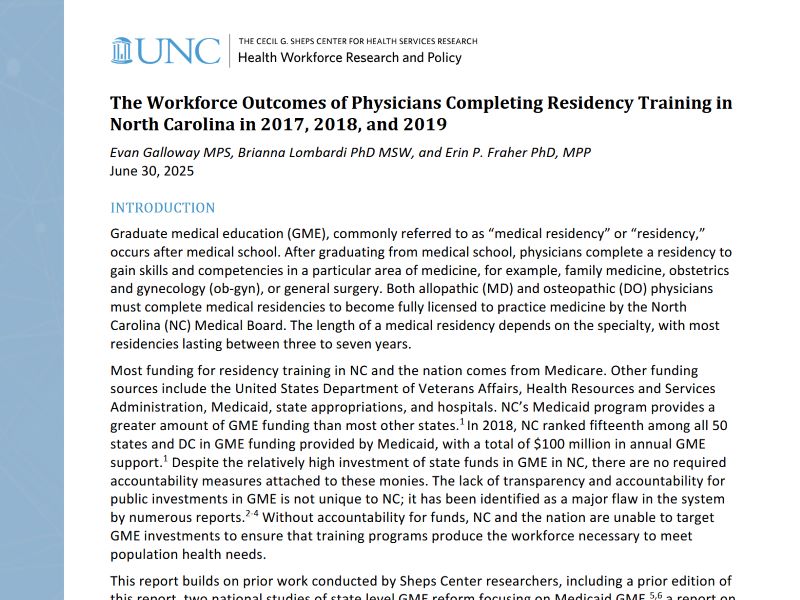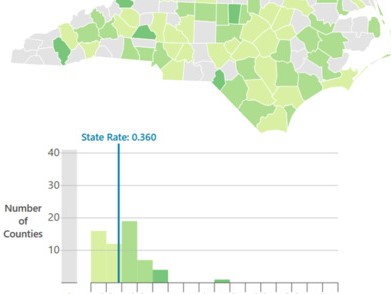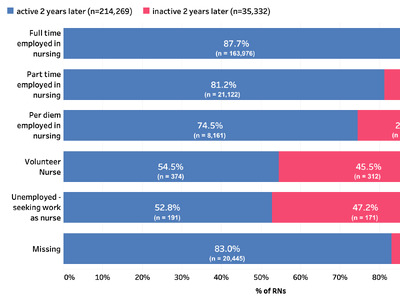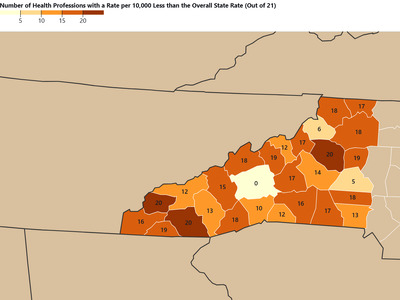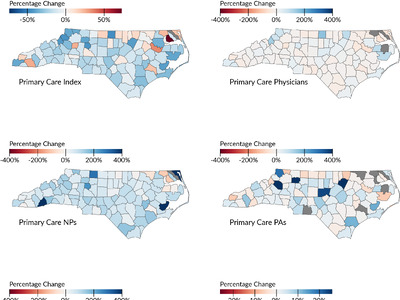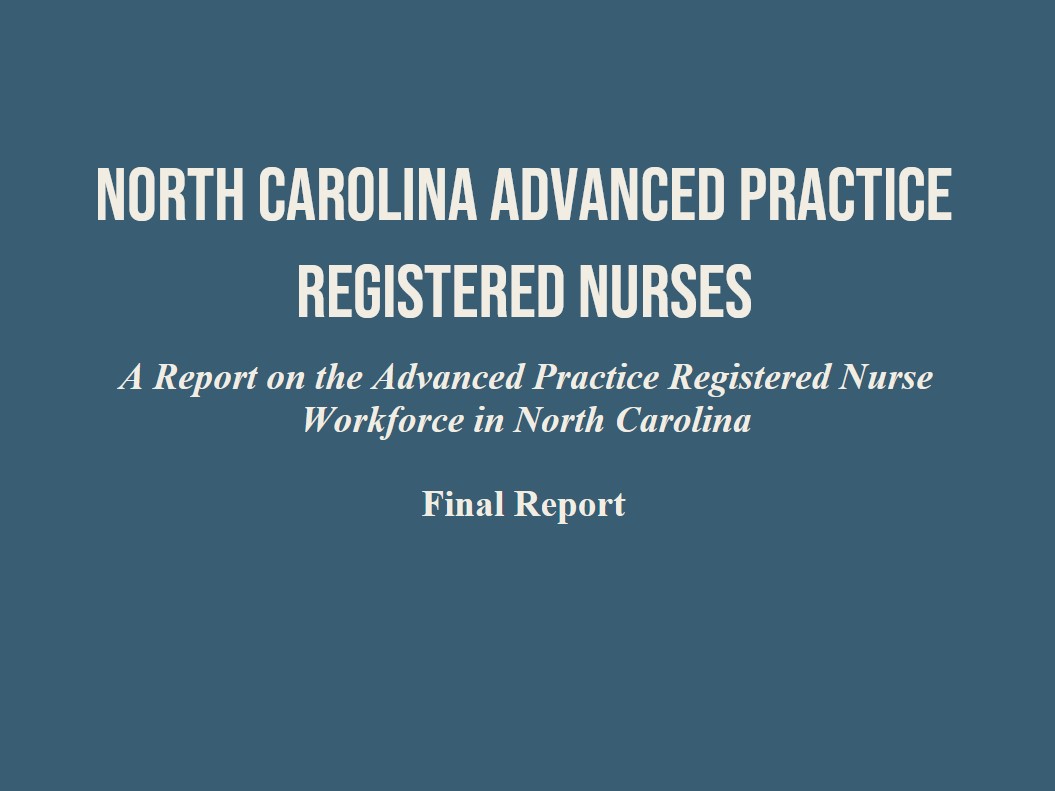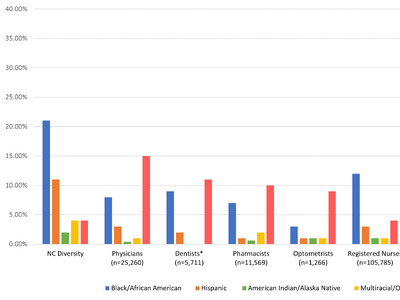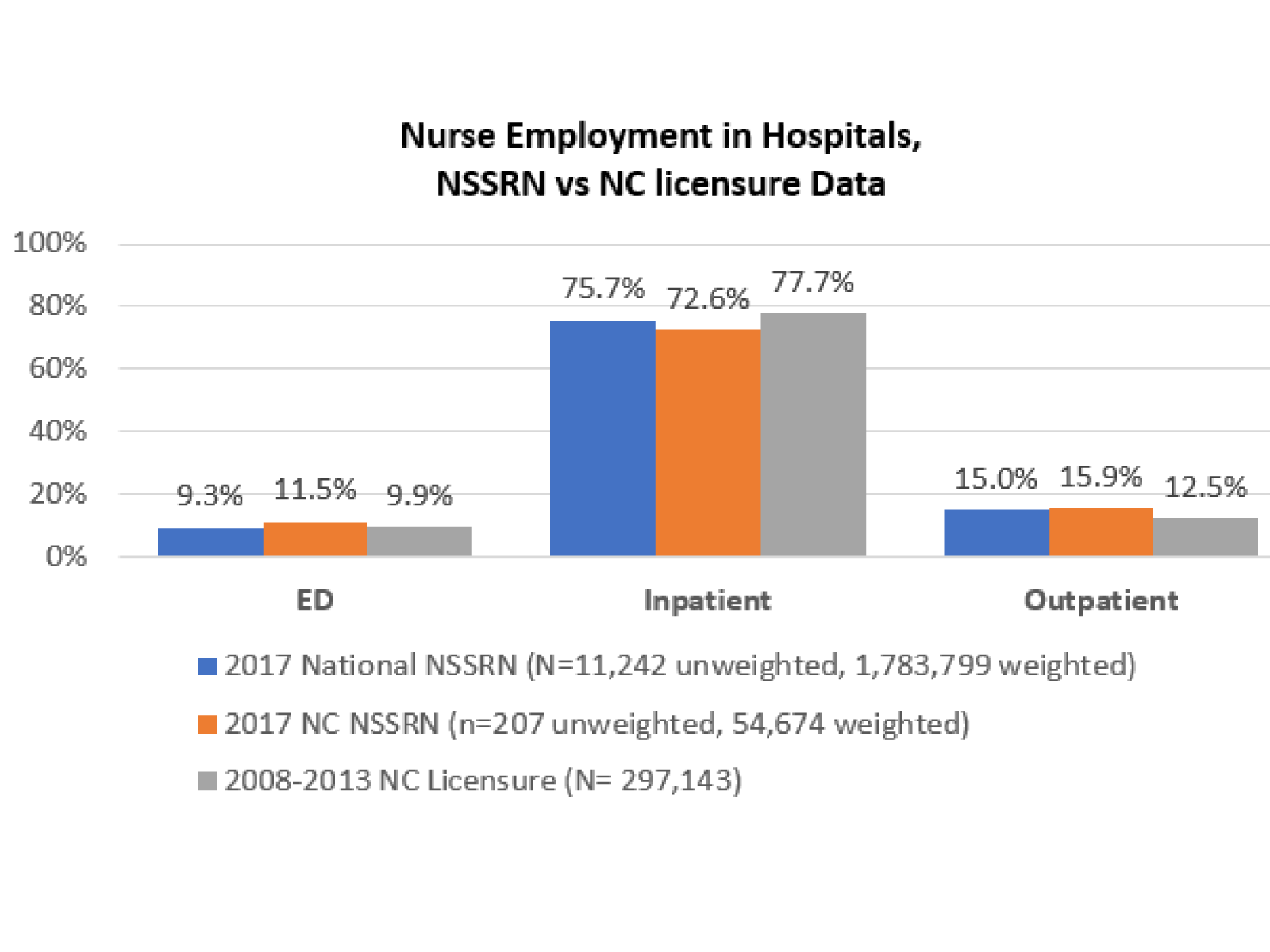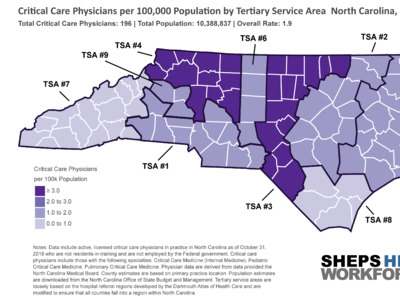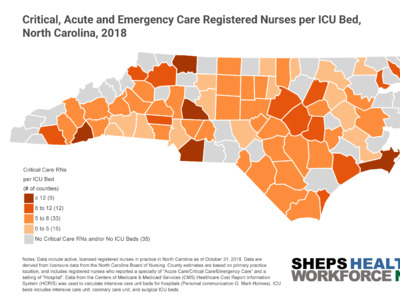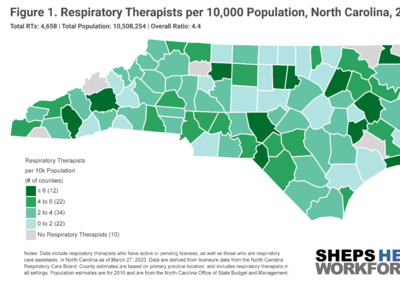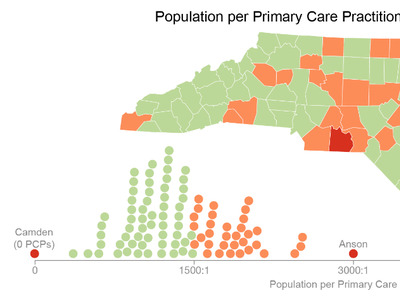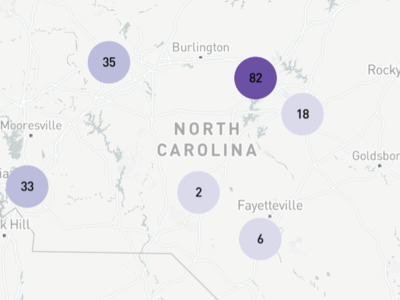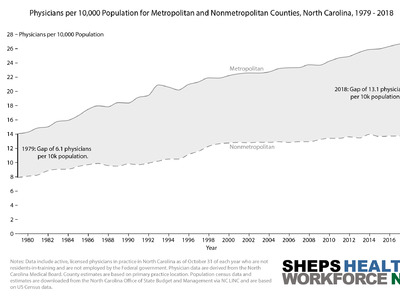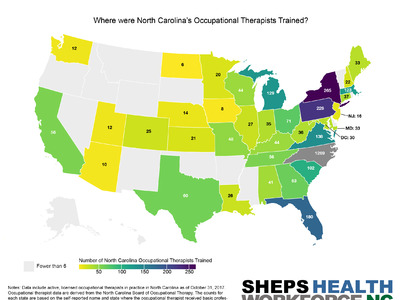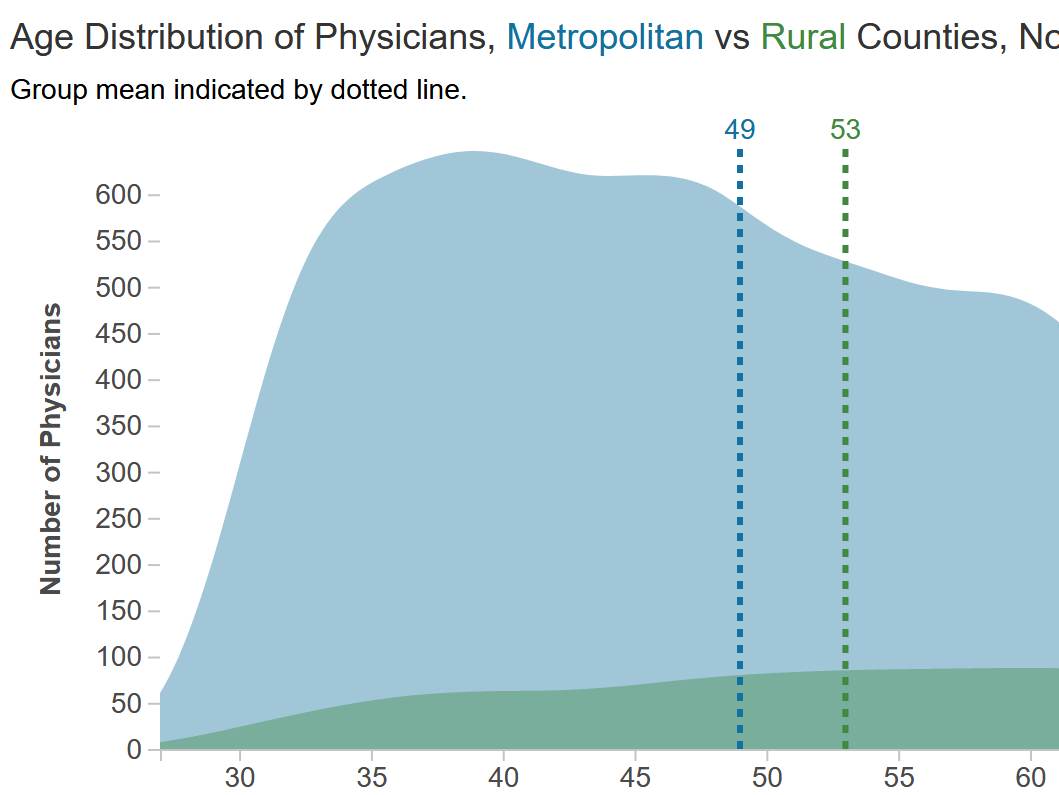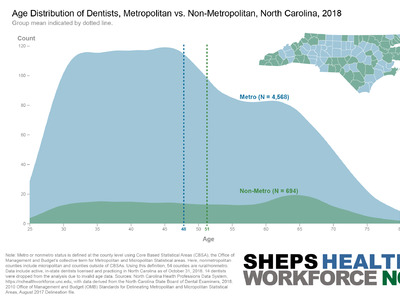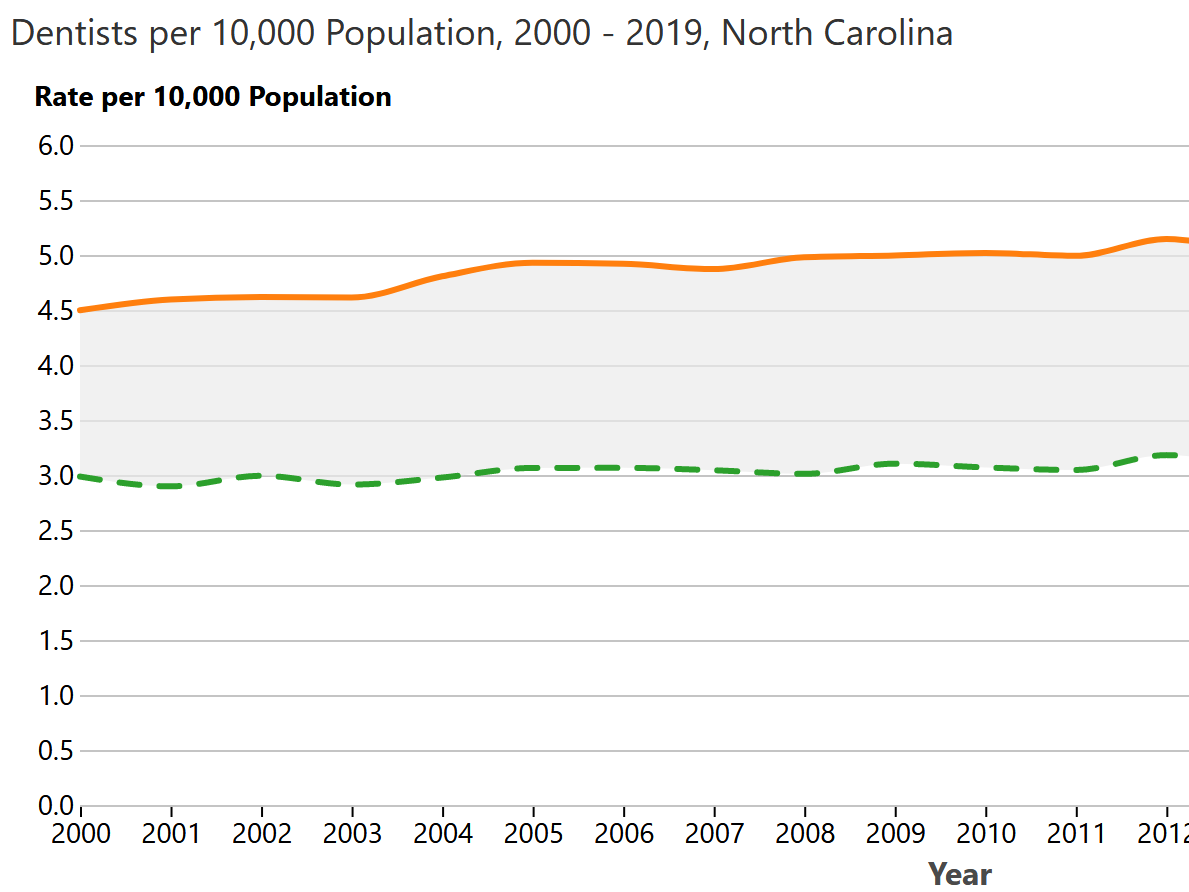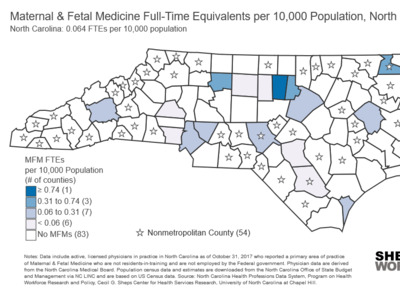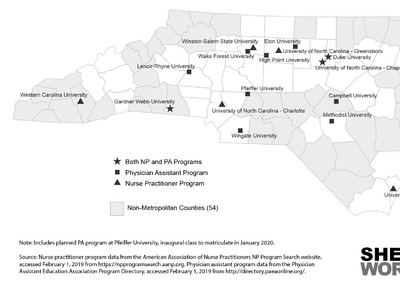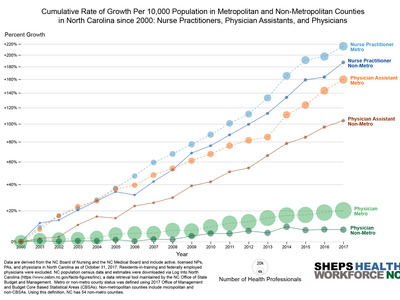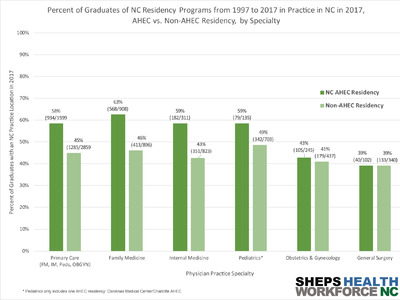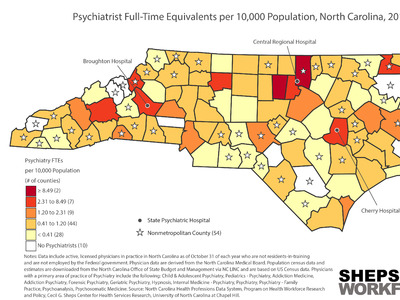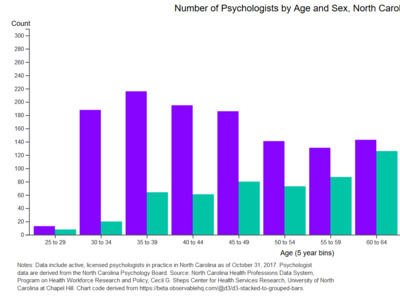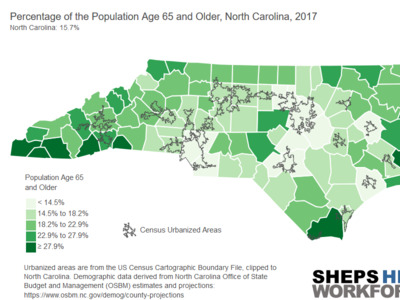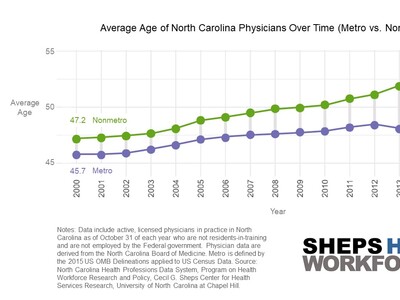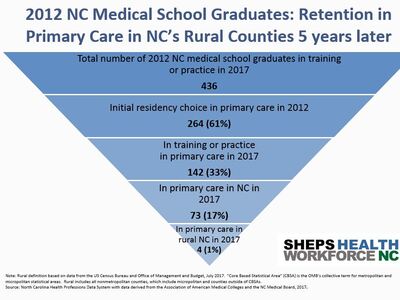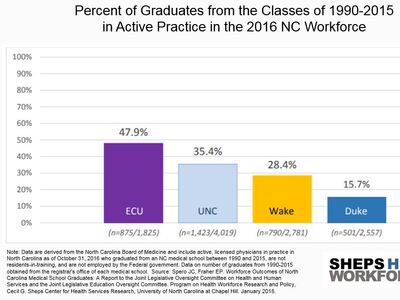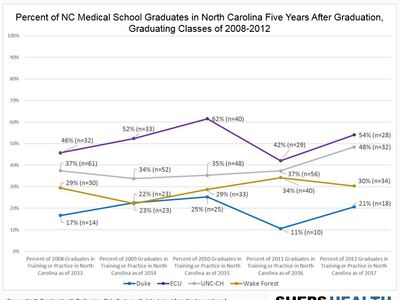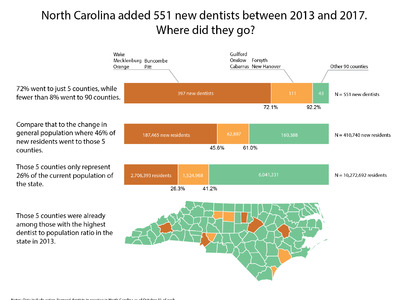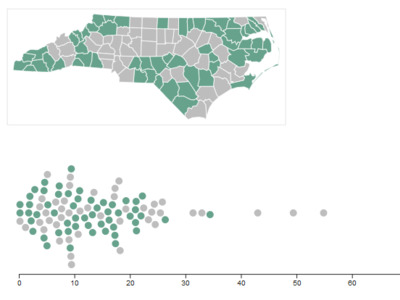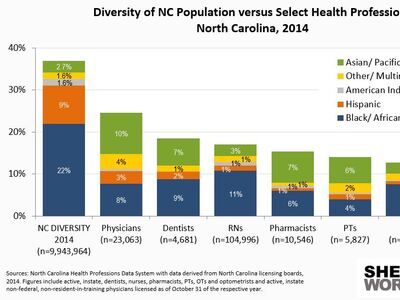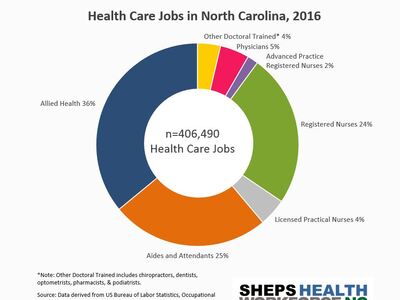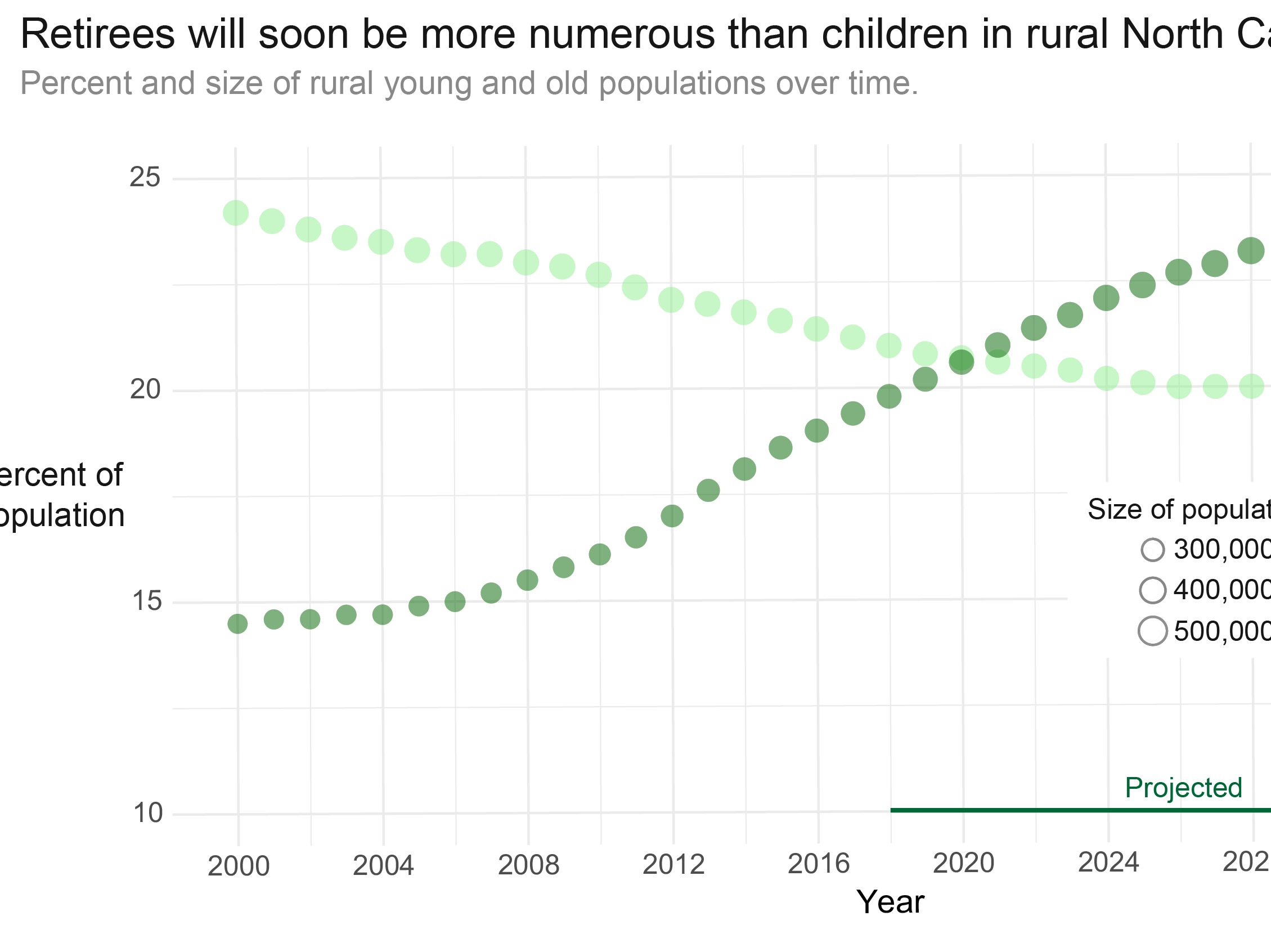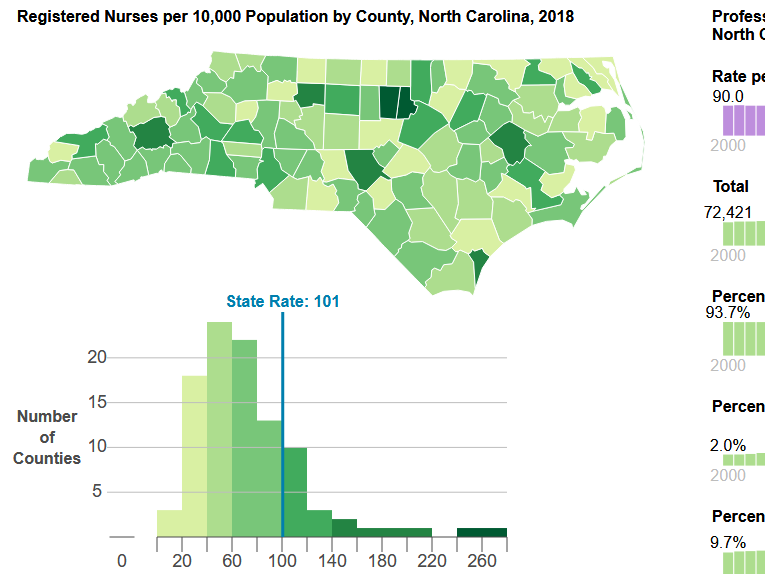What do we know about graduate medical education (GME) outcomes in NC?
By Julie Spero
Nov 8, 2019
- North Carolina’s population is growing fast, with 10% percent growth since 2008. The number of physician residency slots is growing even faster. Over the past decade, the number of residency positions in NC has grown by 14%.
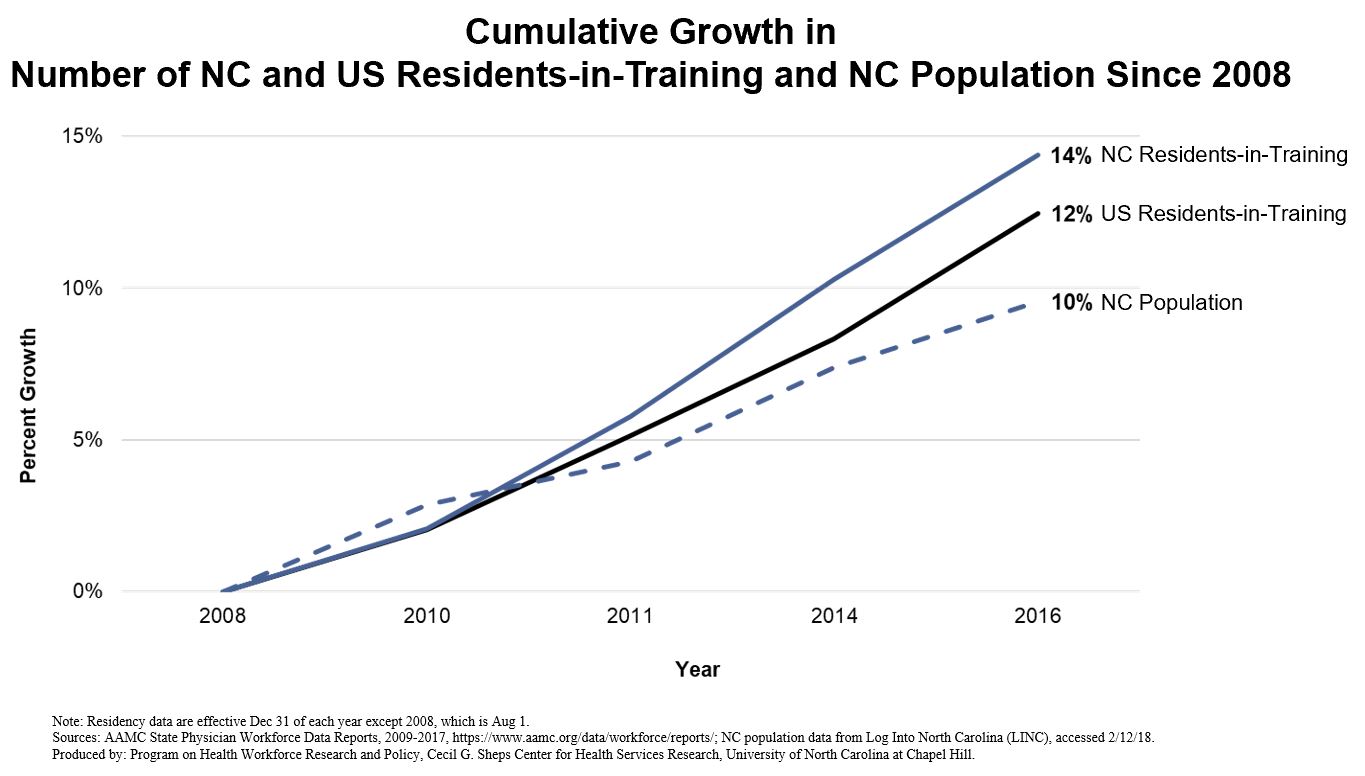
- NC does not have a physician shortage, but physicians are maldistributed in the state (see previous blog post). NC’s physician-to-population ratio is increasing but most of the growth is in urban areas.
- Physicians are more likely to practice in states where they completed their GME training (see state retention rates here). That said, retention rates are not uniform across specialties and programs.
- Compared to non-AHEC NC residency graduates, a higher percentage of NC AHEC residency grads are practicing in NC. This is particularly true for Family Medicine. (See previous blog post)
- In the cohort study of NC GME grads from 2008-2011, some GME specialties had better in-state retention rates five-years after graduation than other specialties did. Graduates from Psychiatry, Internal Medicine-Pediatrics, and Family Medicine were retained at higher rates.
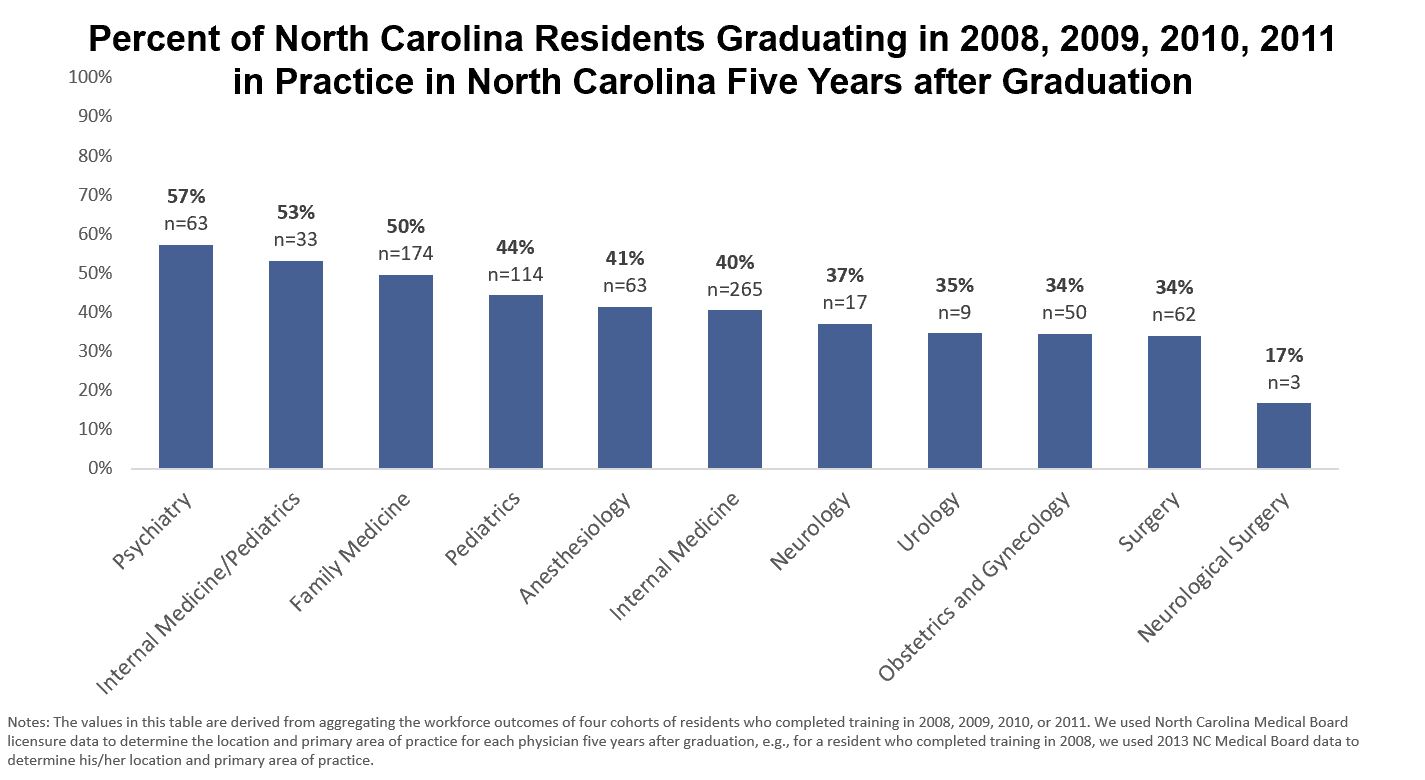
- Some GME programs had high rates of retention in NC five years after graduation in the cohort study (see Appendix, Table 3 for data). Success stories include:
- MAHEC-Asheville Family Medicine Residency: 74% (n=23/31)
- Carolinas Medical Center Family Medicine Residency: 71% (n=22/31)
- UNC Hospitals Psychiatry Residency: 69% (n=33/48)
- Wake Forest School of Medicine Psychiatry Residency: 69% (n=9/13)
- Carolinas HealthCare System Northeast (Cabarrus) Family Medicine Residency: 66% (n=19/29)
- Cone Health Family Medicine Residency: 66% (n=21/32)
- Cone Health Internal Medicine Residency: 66% (n=19/29)
- There is a high concentration of family medicine physicians per capita in Western NC relative to the rest of the state. There are multiple reasons for this, but the MAHEC Family Medicine residency program is likely a factor.
